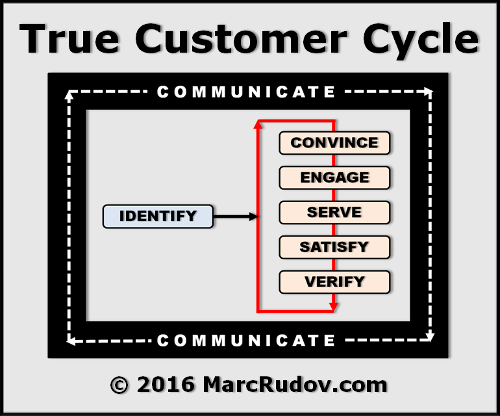 Do you know your cost of customers? Are you sure?
Do you know your cost of customers? Are you sure?
Most discussions about customers center on two topics: the cost of acquiring them and the products they buy. If this is the case in your company, sound the alarm.
First, thinking you can “acquire” a customer is delusional — the epitome of folly and hubris. It connotes ownership.
Newsflash: You can’t and don’t own customers; eliminate acquisition from your sales lexicon.
Words beget attitudes, which beget behaviors. The very second a customer senses that a supplier views him as property — to wit: cable-TV carriers — his resentment and thoughts about bolting begin.
Second, equating product purchases with customer demand is myopic and amateurish. To reiterate from my book and past articles: Customers buy value, not products.
A product is merely the current fulfillment of a brand’s promise. If your company has a weak brand or no brand, and is product-driven, it will bounce around like a pinball — driving up all its costs.
For stability and sustainable success, as you learned in “Brand Outranks You,” make your company brand-driven: brand dictates the people you hire, the processes you implement, and the products you build.
True Customer Cycle
How to grasp and manage your cost of customers?
Know the customer and heed the true customer cycle, as depicted below: identify the customer, then enter the endless loop (for repeat business) of convince, engage, serve, satisfy, and verify.
Each of these stages, and its outcome, is measurable — in direct proportion to customer proximity. In other words, the more distant and faceless your customers, the less you’ll know them and their true cycle costs. It’s common sense and explains the rationale for Amazon.com’s recent foray into physical retail stores.
Two distinguishing characteristics of the true customer cycle:
- “Acquire” and the ownership attitude are nonexistent
- Convincing is required for every sale — no presumption.
NOTE: Identifying the ideal customer, a function of the brand, is critical. In my experience, many companies don’t have target customers — they’re simply open for business. Result: they don’t know whether the customers are satisfied or even profitable to serve.
Most important, the entire cycle is enveloped in constant communication; customers are never in the dark, at any stage of the cycle.
Parting Advice to CEOs
Eliminate “customer acquisition” from every discussion and document in your enterprise.
Force every employee to embrace and live the true customer cycle.
If, however, failure or poor performance is your goal, make the cost of customers unknown and uncontrollable by:
- Celebrating products, thereby dismissing branding
- Akin to building a moat, putting unreliable, impersonal social media between your company and its customers
- Place “I-text-I-don’t-talk” Millennials, with zero experience in face-to-face selling and a preference for faceless clicks over humans, in branding and marketing positions.
Finally, to cut your cost of customers, you must know it. And, this is possible only when you know your customers and why they are so.
POSTSCRIPT #1: Heavy Social Media Users Trapped in Endless Cycle of Depression
© 2016 Marc H. Rudov. All Rights Reserved.
About the Author

Marc Rudov is a branding advisor to CEOs,
producer of MarcRudovTV, and author of four books


